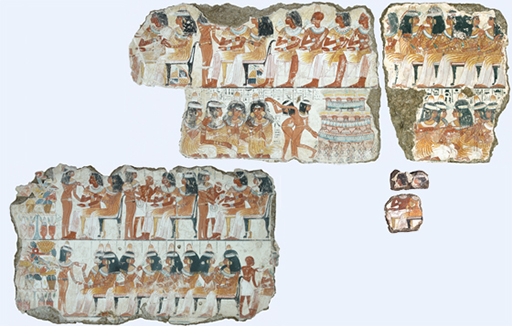2 The banquet scene
In this section you will look at the banquet scene from the Nebamun wall paintings. These fragments are part of a single complex decorative scheme that probably filled most of an entire wall of the tomb-chapel (Figure 6).

Once again, begin by looking closely at the surviving fragments, making notes of what you can see, and we will develop an understanding of what the fragments show in the context of the original scheme.
Take the first two fragments together (Figure 7). What is the most obvious thing you notice about the arrangement of the figures?
The feature a modern viewer would pick out is that the figures are arranged in two horizontal bands, one above the other. These bands are ‘registers’: an important convention in Egyptian art, dating back to the very beginning of the dynastic period around 3000 BC.
It is not clear what the spatial arrangement of the figures on these two registers would have been, relative to each other: for example whether those figures on the top row would have been arrayed in front of those on the second, or seated in a circle around them, or in some other way; the same goes for the spatial relations with the other two registers. While there is spatial integration within the registers, it is difficult to discern any across them.
